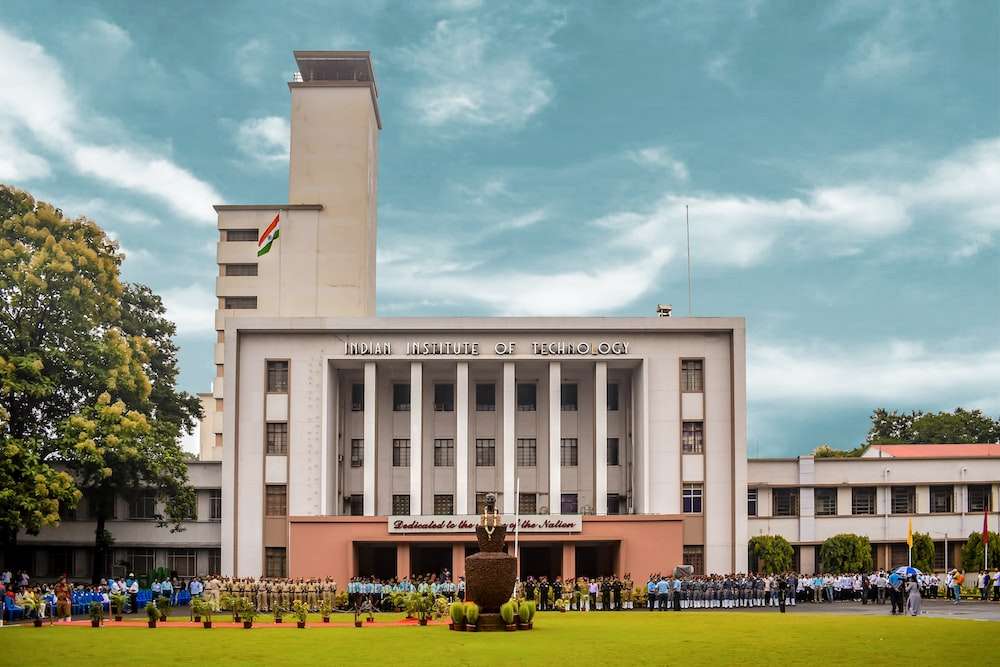The Indian Institutes of Technology (IITs) are a group of 23 autonomous prestigious engineering and technology-oriented institutes of higher education established and declared as Institutes of National Importance by the Parliament of India. They are funded by the Ministry of Education of the Government of India and are governed by the Institutes of Technology Act, 1961. There are many IIT students placement in top companies.
IITs offer undergraduate, postgraduate, and doctoral programs in engineering, science, and technology. They also have strong research programs in a variety of fields.

Here are some of the factors that contribute to the strong placement record of IIT:
- Strong alumni network: Successful professionals who are always willing to assist their juniors make up the IITs’ strong alumni network. IIT students get access to mentorship and job opportunities through this network.
- Industry-relevant curriculum: The IITs’ curricula are created with the goal of preparing students with the abilities that businesses are looking for.
- Proactive career counseling: IITs have a dedicated career counseling team that helps students to identify their career goals and develop a plan to achieve them.
- Strong brand value: IITs have a strong brand value, which makes them attractive to employers.
- Global exposure: IITs offer a variety of opportunities for students to gain global exposure, such as international internships and exchange programs.
- Positive work culture: IITs have a positive work culture that encourages innovation and creativity.
Placement Process of IIT
- Pre-Placement Talks (PPTs): Before the formal placement process begins, companies visit the campus to conduct pre-placement talks. During these talks, company representatives provide information about their organization, work culture, job roles, and career opportunities. This allows students to learn more about the companies and make informed decisions about which ones to apply to.
- Resume Submission: Students interested in participating in the placement process submit their resumes to the Placement Cell. These resumes are then compiled and shared with the participating companies.
- Shortlisting: Companies review the submitted resumes and shortlist candidates based on their academic performance, skills, and relevant experiences. Shortlisted candidates are invited to participate in the next stage of the process.
- Online Tests: Some companies conduct online tests to further assess candidates’ technical and aptitude skills. These tests can vary in format and difficulty based on the company’s requirements.
- Group Discussions (GD) and Technical Interviews: Shortlisted candidates often participate in group discussions, where they are assessed on their communication, critical thinking, and teamwork skills. Subsequently, technical interviews are conducted to evaluate candidates’ technical knowledge and problem-solving abilities.
- Personal Interviews: Candidates who perform well in the technical interview are usually called for personal interviews (HR interviews). These interviews assess candidates’ suitability for the company in terms of cultural fit, attitude, and other non-technical aspects.
- Offer Letters: After the interview rounds, companies make job offers to the selected candidates. The offer letters include details about the role, compensation package, location, and other relevant information.
- Acceptance and Rejection: Candidates have a certain amount of time to consider and accept job offers. They can choose to accept an offer, reject it, or wait for offers from other companies. Once they accept an offer, the placement process for that student is considered complete.
Top Recruiters at IIT 2023
| Recruiter | Highest Salary (INR) |
|---|---|
| Goldman Sachs | 45 lakhs per annum |
| Microsoft | 40 lakhs per annum |
| 38 lakhs per annum | |
| Amazon | 35 lakhs per annum |
| Adobe | 30 lakhs per annum |
| Infosys | 28 lakhs per annum |
| TCS | 27 lakhs per annum |
| Walmart Labs | 25 lakhs per annum |
| Samsung | 24 lakhs per annum |
| Schlumberger | 23 lakhs per annum |
Placement of IIT 2023
| Particulars | Statistics |
|---|---|
| Total students | 105,000 |
| Companies participated | 1,500+ |
| Offers made | 100,000+ |
| Placement percentage | 95% |
Packages of IIT 2023
| Stream | Highest Package (INR) | Average Package (INR) | Lowest Package (INR) |
|---|---|---|---|
| Computer Science and Engineering | 3.67 crores | 23.26 lakhs | 5.5 lakhs |
| Electrical and Electronics Engineering | 1.31 crores | 21.78 lakhs | 4.5 lakhs |
| Mechanical Engineering | 2.4 crores | 20.56 lakhs | 4 lakhs |
| Civil Engineering | 1.75 crores | 19.21 lakhs | 4 lakhs |
| Chemical Engineering | 1.25 crores | 18.83 lakhs | 4 lakhs |
| Biotechnology | 1.1 crores | 18.48 lakhs | 4 lakhs |
Frequently Asked Questions
The IITs (Indian Institutes of Technology) are a group of autonomous public technical and research universities located across India. They are renowned for their quality education and contributions to research and innovation.
As of my last update in September 2021, there are 23 IITs spread across various states in India.
IITs offer a range of undergraduate, postgraduate, and doctoral programs in engineering, technology, science, and related fields. These programs cover disciplines like computer science, electrical engineering, mechanical engineering, civil engineering, and more.
Admissions to undergraduate programs (such as B.Tech) at IITs are primarily done through the Joint Entrance Examination – Advanced (JEE Advanced), which is a competitive entrance exam. For postgraduate programs, admissions might involve GATE (Graduate Aptitude Test in Engineering) or other specific entrance exams.
 60 minutes of Duration
60 minutes of Duration 180 Questions
180 Questions Instant Report
Instant Report 4 Dimensions
4 Dimensions 500+ Career Options
500+ Career Options 1M+ Test Taken
1M+ Test Taken




